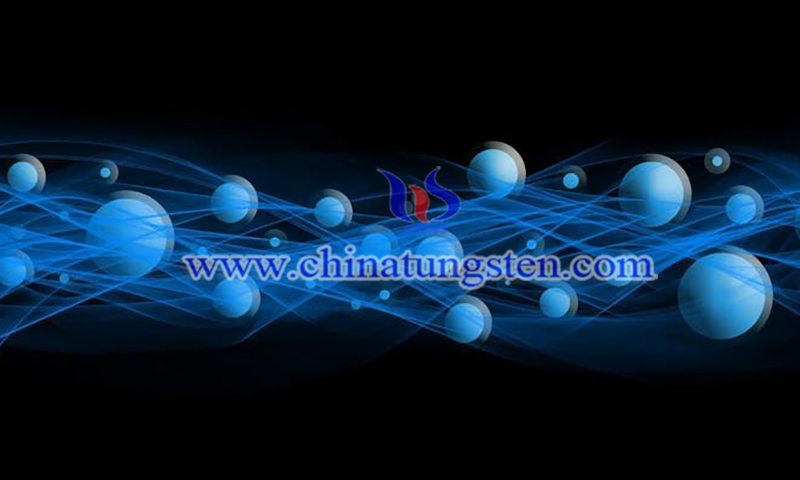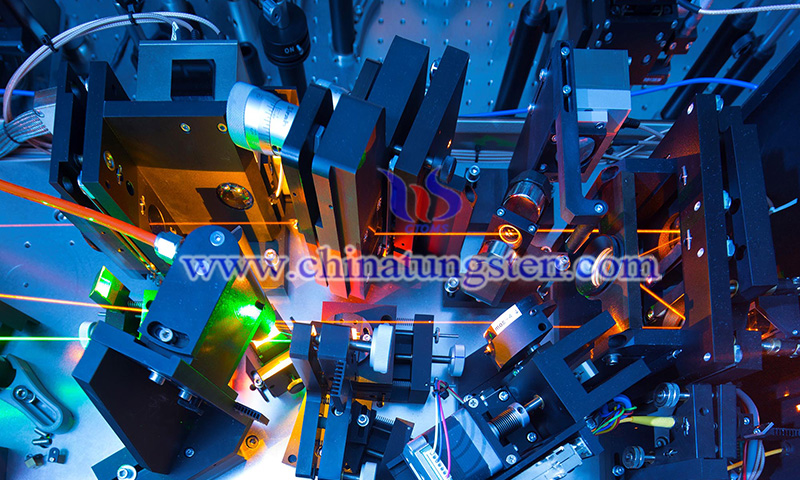Rare Earth Ion Light Shows Promise for Quantum Technology
- Details
- Category: Tungsten's News
- Published on Wednesday, 30 March 2022 21:33
A team of researchers from Chimie ParisTech, CNRS, Strasbourg University, and Karlsruhe Institute of Technology researchers in France and Germany has discovered a new material for processing quantum information with light: a rare earth europium molecular crystal containing nuclear spins that can undergo quantum technology.
Europium is a rare-earth metal known for being the most active member of the lanthanide family of elements in the periodic table (63). Rare-earth molecular crystals are attractive to researchers because they can be chemically engineered with atomic-level precision.
"This means we can choose the material composition and the precise arrangement of the atoms surrounding the rare-earth ions," said Diana Serrano, a researcher at CNRS, "which opens the door to fine-tuning the properties of rare-earth ions."

Europium exhibits luminescence by laser excitation, emitting photons carrying nuclear spin information. The nuclear spin within the molecule, the angular momentum of the nucleus enables the superposition state to have a long coherent lifetime because the nuclear spin is shielded from the environment and protects the quantum bits (qubits) from external influences.
Quantum manipulation requires numerous quantum bits to be entangled via quantum mechanics, and the team's work shows that europium ions within molecules can be coupled via electric heterodyne fields, which makes future entanglement and quantum information processing possible. Their work also includes the resolution of nuclear spin levels with the help of photons, coherent storage of photons, and quantum manipulation.
According to the team, optical addressing increases readout speed and can be used to prevent interference with electrical feedback. Compared to previous projects, they report a 1000-fold increase in optical coherence in molecular materials, thanks to optical manipulation of the nuclear spin state in a specific way.
The main optical principle of this work involves the storage of an optical coherent state from the laser pulse to the atomic transition, in this case. Serrano explains, "This optical coherent state becomes a quantum superposition between the ground state and the excited state of the europium transition."
Once the superimposed state is created, it can be recovered in the form of a pulse of light emitted by the material that carries information about the initial input pulse. "This is how optical quantum memory works, and from this storage-recovery process, we can extract information about the timing or efficiency of quantum storage," Serrano said.

One of the biggest challenges in designing good quantum materials is the need for long-term storage, along with a high density of quantum bits and strong interactions between them.
Serrano said, "It's very difficult to do this within a single system because strong interactions are often detrimental to storage times, and one of the coolest aspects of this material is that it can have very high quantum bit densities, where all the quantum bits are the same and in a well-defined location, while still maintaining a very long optical storage time. There is still room for improvement, and there are many other molecular components that need to be tested, but these materials look very promising."
"An important challenge for optical quantum technology is to be able to resolve a single rare earth ion, europium, which has a very low emissivity and which has never been treated and detected in isolation, a way to overcome this challenge is by coupling the optical transition to a photonic structure or optical cavity, which enables an increase in the ion's emissivity. This approach has been successfully applied to erbium, another rare-earth ion with very low emissivity," Serrano said.
The main applications that researchers are now targeting are quantum computing and quantum communication. Serrano sees a lot of room for improvement in the future, and there are many other molecular components that need to be synthesized and tested.
She said, "It will be interesting to explore molecules containing rare-earth ions other than europium because each rare earth in the lanthanide system exhibits different transition wavelengths and also has different spin properties, which is another important dimension for quantum technology because it allows for longer storage times. We also envision an effective coupling of molecules to photonic structures."
- Rare Earth Manufacturer & Supplier, Chinatungsten Online: www.chinatungsten.com
- Tungsten News & Prices of China Tungsten Industry Association: www.ctia.com.cn
- Molybdenum News & Price: news.molybdenum.com.cn
- Tel.: 86 592 5129696; Fax: 86 592 5129797; Email: sales@chinatungsten.com



 sales@chinatungsten.com
sales@chinatungsten.com